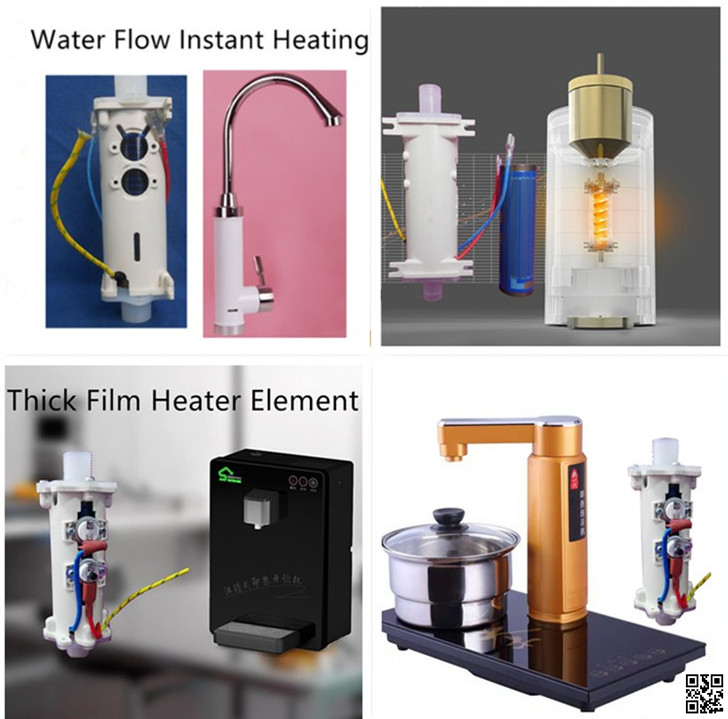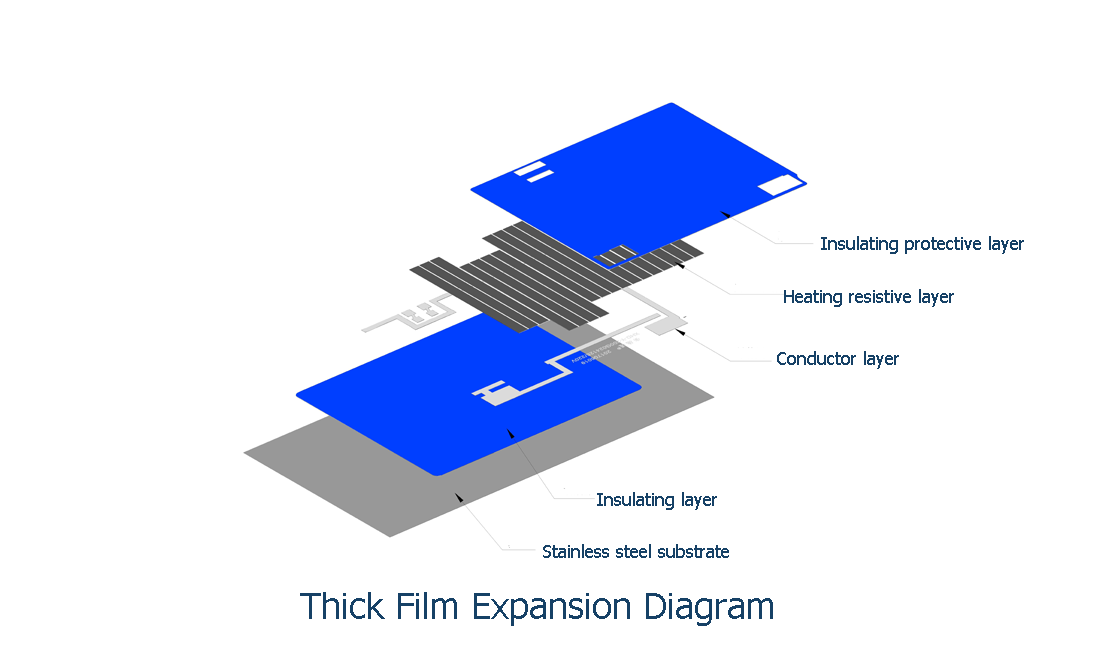From July 1st, China's thermal power plants built before 2012 began to implement the new version of air pollutant discharge standards. This is the most stringent emission standard for thermal power plants in history. It is equivalent to the standards of the developed economies such as the European Union, Japan, Canada, and Australia, which will greatly reduce the emission of pollutants such as soot, sulfur dioxide and nitrogen oxides from thermal power plants in China. the amount. In order to meet emission standards, domestic thermal power companies have been accelerating the process of reducing emissions, and the desulfurization and denitrification industry has also entered the “fast track†of development.
"The strictest in history" emission standards
Speaking of thermal power plants, I am afraid that many people will think of pollutant emissions in the first place. Data show that soot, sulfur dioxide, nitrogen oxides and other air pollutants for thermal power plants is still an important source of pollution haze, with the fog and haze has been increasing, and how to control emissions from thermal power plants has also become one of the important work of local governments. The emission standards are more elastic direct impact on air quality is good or bad.
As early as 2011, the Ministry of Environmental Protection and the State Administration of Quality Supervision, Inspection and Quarantine jointly issued a revised "thermal power plant air pollutant emission standards," the new standard in effect from January 1, 2012. Which states that since July 1, 2014, completed in 2012 before the implementation of thermal power generation boilers and gas turbines soot new rules, sulfur dioxide, nitrogen oxides and black smoke emission limits of pollutants in emission control requirements.
This is what so many new emission standards for thermal power enterprises smell "standard" discoloration.
Deputy Director of Datang Group Safety Production Department of Environmental Protection Liang Qingyuan told reporters that the new emission standards for dust 30mg / m3, sulfur dioxide 200mg / m3, nitrogen oxides 100mg / m3. Than the first thermal power plant of 2004, the implementation of air pollutants Emission standards, these emission limits are significantly tightened.
Compared with foreign environmental standards, the new standard is not inferior. Taking sulfur dioxide as an example, China's new boiler sulfur dioxide emission limit is 100mg/m3. According to the "Guidelines for the Preparation of Air Pollutant Emission Standards for Thermal Power Plants", the EU 2001/80/EC Directive requires that the emission concentration of new large-scale combustion units must be less than 200mg/ M3, the new source emission limit specified by the United States in 2005 is equivalent to 184mg/m3.
“The ever-changing emission standards have brought severe challenges to the environmental protection work of thermal power companies. However, as a large central enterprise, Datang Group should assume social responsibility. Ensure pollution through measures such as structural emission reduction, project emission reduction and management emission reduction. Emissions can meet the requirements of new emission standards," Liang Qingyuan said.
According to the Compilation Note, due to the implementation of the new standard, by 2015, the sulfur dioxide emissions will be reduced from 8.59 million tons in 2010 to 4.09 million tons, the reduction rate is 52%, and the contribution rate to national emissions reduction is 23.9%; The annual reduction was 411 tons, and the reduction rate was 52%.
Thermal power or will achieve near zero emissions
From the beginning of the introduction, this standard was called “Nine-level earthquake plus tsunami†by thermal power enterprises. In order to achieve emission standards, domestic thermal power companies have been accelerating the reduction of desulfurization, denitrification and dust removal in coal-fired units for more than two years. Process.
Datang Nanjing Power Plant is a thermal power plant with a history of 100 years. In the 1950s and 1960s, as the backbone thermal power plant of East China Power Grid at that time, it undertook one third of the power generation tasks in Jiangsu Province. Nowadays, after years of transformation and upgrading, Datang Nanjing Power Plant has become the pioneer of “ultra-low emissions†of coal-fired power plants in China.
According to reports, in order to continuously improve the level of energy conservation, Datang Nanjing Power Plant has applied a number of new technologies in its production: optimizing the design of the side coal bunker, shortening the length of the boiler and steam room piping, and reducing the heat loss of the pipeline during operation; The booster fan and the boiler induced draft fan are combined into one; the electric pump uses a 30% flow starter pump to install a low-temperature economizer... Datang Nanjing Power Plant has used 22 energy-saving technologies.
According to the data, during the “Twelfth Five-Year Plan†period, faced with a severe new environmental protection situation, Datang Group actively took measures to increase investment in environmental protection and transformation, with a total investment of 17.7 billion yuan, including 4.98 billion yuan in 2013 and 8 billion yuan in 2014. Yuan, the focus is to complete the task of denitration and environmental protection transformation. By the end of June, 131 denitration projects had been completed, 54 million kilowatts, and the rate of denitration equipment reached 78.43%, completing the task of reducing the responsibility of the Ministry of Environmental Protection.
"On March 22, 2014, the state proposed that the Beijing-Tianjin-Hebei region should meet the new emission limit (20mg/m3 of soot, 50mg/m3 of sulfur dioxide, and 100mg/m3 of nitrogen oxides). 'The higher requirements of 'smoke 5mg/m3, sulfur dioxide 35mg/m3, nitrogen oxide 50mg/m3', which makes Datang face unprecedented pressure.†Liang Qingyuan said.
According to Liang Qingyuan, Datang Group has 44 thermal power units in the Beijing-Tianjin-Hebei region, with an installed capacity of 11.77 million kilowatts, accounting for more than 30% of the regional units. In response to the country's March, the Beijing-Tianjin-Hebei region thermal power units reached special emission limits. On the one hand, Datang Group overcame difficulties to implement the transformation funds. On the one hand, the management technicians worked overtime and worked continuously. In less than two months, they completed the feasibility study and evaluation and evaluation. At present, all the transformation projects are completed. Construction has started.
"To make coal burning can be as clean as burning natural gas," Zhang Jun, deputy director of Datang Nanjing Power Plant, said in an interview. Liang Qingyuan also told reporters that Datang Group has fully completed the responsibility book project of the Ministry of Environmental Protection to ensure that all pollutant emissions from the operating units meet the new standards, and will actively carry out the “near zero emission†pilot work and select Wushashan Power Plant. Unit 4 and Unit 2 of Nanjing Power Plant carried out “near zero emission†environmental demonstration transformation. After the completion of the transformation, the unit's sulfur dioxide emissions will reach 35mg/m3, nitrogen oxides 50mg/m3, and soot 5mg/m3.
According to the data released by the China Electricity Council in the middle of the year, as of the end of 2013, China has accumulatively commissioned flue gas desulfurization units of thermal power plants, accounting for more than 90% of the capacity of existing coal-fired units, and the proportion of denitration units is about 50%. Get initial control.
Drive the 100 million yuan denitration market
Strict environmental standards "forced" thermal power enterprises to increase investment in air pollutants control, but also promoted the "golden period" of environmental protection industries such as desulfurization and denitrification, especially the denitration market showed explosive growth.
According to the “Description of Preparationâ€, when the desulfurization limit is 100mg/m3 and 200mg/m3, the flue gas desulfurization device with desulfurization efficiency ≥95% should be installed from the technical feasibility analysis, which means that the desulfurization device with high efficiency and stable operation will be marketed. Favored.
According to public information, since the publication of the "Air Pollution Emission Standards for Thermal Power Plants" in early 2012, hundreds of desulphurization and denitrification companies have been rapidly established in China, and related catalyst companies have also swarmed.
At the same time, in order to encourage existing thermal power plants, as well as other industries such as steel and cement, the state has increased dust removal and desulfurization and denitrification. In 2013, the company issued a special environmental protection electricity price system, and adopted new technologies for dust removal facilities and low smoke and dust emission. The dust removal cost of coal-fired power generation enterprises that have passed the acceptance of 30mg/m3 and passed the environmental protection department shall be appropriately supported. At the same time, the national denitrification price will be increased by 0.2 points/kW to 1 minute/kWh, which will increase the enthusiasm of denitrification in thermal power plants and significantly increase the yield of denitrification projects in thermal power plants.
In the "Compilation Notes", the capacity of the entire thermal denitration market has also been predicted. By 2015, new flue gas denitration capacity of 871 million kilowatts will be required. If both are equipped with high-efficiency low-nitrogen burners and SCR (selective catalytic reduction technology), The investment of the old unit is 280 yuan per kilowatt denitrification unit, and the new unit is equipped with an investment of 150 yuan per kilowatt denitration unit. The total investment in denitration is 195 billion yuan. Each unit operates for 5,000 hours per year, and the operating cost per denitration operation is 0.015 yuan. In 2015, the operating cost is 61.2 billion yuan per year. By 2020, there will be an additional 10.66 billion kilowatts of flue gas denitration capacity, a total of 232.8 billion yuan for denitrification, and 80 billion yuan per year for 2020.
In this regard, Professor He Hong from the School of Environmental and Energy Engineering of Beijing University of Technology said, “The reduction of nitrogen oxides will be the top priority of the '12th Five-Year' air pollution control. It is estimated that the capacity of the denitrification market of the '12th Five-Year' thermal power plant will reach 1300. 100 million yuan. Industrial (non-electrical industry) furnaces and facilities have nitrogen oxide emissions equivalent to the power industry, and its denitration market capacity is also more than 100 billion yuan."
Heater Category By Application
The thick film heating technology is new type of heating technology which is developed mainly by DuPont and Heraeus in 1990s. They developed the electronic paste can be used on the stainless steel substrate firstly. Using screen printing technology to print and sinter dielectric layer, resistance layer, silver conductor layer and isolation glazes protective layer on the stainless steel, so as to obtain a new type of heating element
Thick film heater can successfully replace Traditional Electric Heating Tubes/Elements, change their structures and performance completely, which can reduce energy consumption, increase energy utilization and save space.

Thick Film Heater Elements are widely applied in instant hot water dispenser, instant boiling water heaters, sous vide, coffee maker, electric heating water faucet, instant water flow heater under sink, diswasher, washing machine,formula dispenser, vending machine, industrial water flow heater, circulating heating of swimming pool water, industrial equipments etc.

Heater Category by Application,Heater Category,Small size heater,electric tubular heater
XINXIANG JIEDA PRECISION ELECTRONICS CO.,LTD , https://www.tubularheater.de
